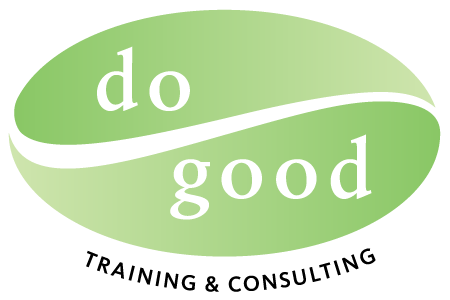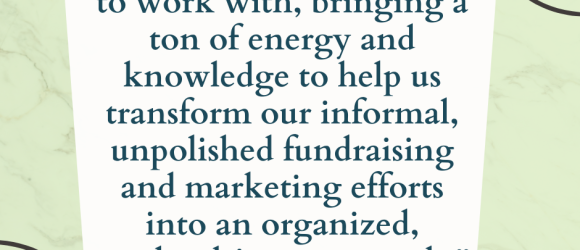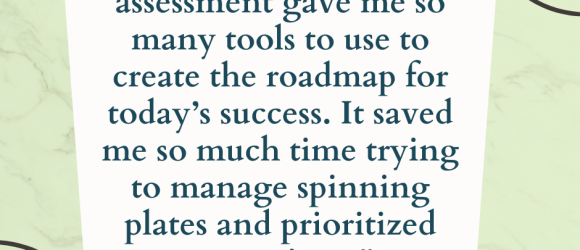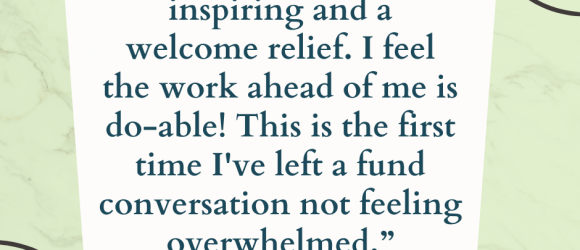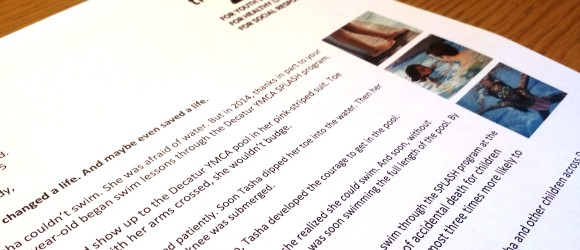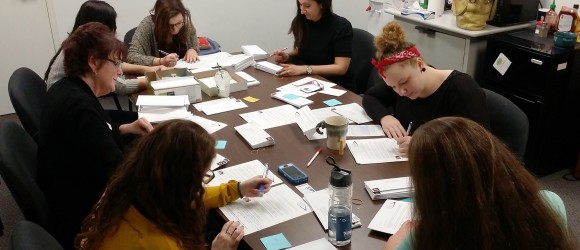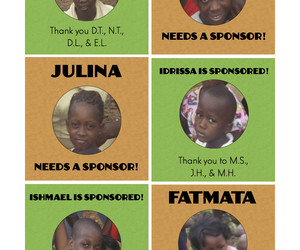Killing TTWWADI
Ushering in New Ideas Leads to Explosive Growth
“That’s the way we’ve always done it.”
If you’ve worked with or for a nonprofit, this is probably not an unfamiliar phrase. Stuck in time-worn paths that bring the comfortable, but not always results, TTWWADI (“Tah-Wah-Dee” – go ahead, say it!) can be a dangerous stuck-place for organizations, limiting their visibility and creating stagnated fundraising.
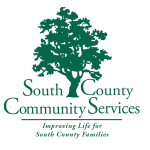 Limiting isn’t what Drew Johnson was looking for when he took over the helm at South County Community Services four years ago. SCCS is the only human services agency dedicated to serving and supporting low-income residents and seniors in southern Kalamazoo County in southwest Michigan.
Limiting isn’t what Drew Johnson was looking for when he took over the helm at South County Community Services four years ago. SCCS is the only human services agency dedicated to serving and supporting low-income residents and seniors in southern Kalamazoo County in southwest Michigan.
“I knew we could do more – that we needed to do more,” the young, energetic new executive director told me at the time. “What we’re doing works, but I know we can do better.”
And boy could they. After bringing me on to conduct an organizational assessment, we identified some key priority areas for action. It was the first step in a multi-year engagement that has resulted in a 450% explosion in donor revenue and a stunning 22,800%. expansion of their email list.
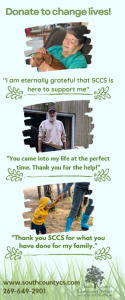 Our first phase goal was to raise both organizational awareness and increase donations. Work began in two essential areas: a technology boost in the form of a formal database system (and saying goodbye to decades of fragmented spreadsheets) and updating communications to highlight the stories of the lives SCCS has touched.
Our first phase goal was to raise both organizational awareness and increase donations. Work began in two essential areas: a technology boost in the form of a formal database system (and saying goodbye to decades of fragmented spreadsheets) and updating communications to highlight the stories of the lives SCCS has touched.
After purchasing Bloomerang – an easy-to-use and high-functioning CRM (database) specifically for nonprofits – Drew and his small SCCS team leaned in to grow their contact database and to launch their first-ever enewsletter. In short order donor engagement grew and knowledge of SCCS’s work and impact spread across their service region. From that outreach came a flurry of media hits about their work and even a coveted half-page monthly column in the local newspaper – a platinum-level free media opportunity!
As year-end approached, we made tweaks to the physical pieces they used to entice donors to give and SCCS saw their individual giving continue to rise. Next, their team was trained to use a mile-wide technique – cultivating new prospects – coupled with a mile-deep strategy focused on engaging past donors at new, deeper levels of giving, including monthly giving and major gifts.
As the SCCS team watched their coffers grow – and their email list flourish – work on phase two began.
The membership model SCCS had used for years was born again as The ChangeMakers Circle: a major giving program to engage past and new donors in not just giving, but also doing.
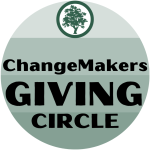 “It was important to us that we recalibrate the active element of the membership program,” Johnson says. “For us, being a part of SCCS isn’t just about financial support. It’s about being a part of the solution and that means helping to spread the word about what we do to help reach more people and families in need and to bring in more supporters to fuel our poverty-fighting work.”
“It was important to us that we recalibrate the active element of the membership program,” Johnson says. “For us, being a part of SCCS isn’t just about financial support. It’s about being a part of the solution and that means helping to spread the word about what we do to help reach more people and families in need and to bring in more supporters to fuel our poverty-fighting work.”
When SCCS supporters sign up to be a part of the ChangeMakers Circle, they agree to make a financial gift, but also to engage in two or more “be the change” activities. These include engaging with SCCS on social media, sharing the “Scooped” enewsletter with friends, volunteering, or donating supplies. Tracking these activities is made easier by using Bloomerang, reports Johnson.
 A new “ChangeMakers Circle” tree is being erected on a prominent wall in the SCCS office. Panels for the tree to grow over time are already being considered.
A new “ChangeMakers Circle” tree is being erected on a prominent wall in the SCCS office. Panels for the tree to grow over time are already being considered.
“Our future looks bright,” beams Board President Steve Richards. “Engaging Laura was a critical investment for us. It took money to make money, but now with our future so bright, we are able to shine that light onto others in our community who need our help. Expanding to serve more need is now the way we do it.”
In the past three years, SCCS’s individual donations have risen from just over $20,000 per year to $110,000 and growing. Their email list has tripled with open rates at 55% and click-throughs of over 10%. Their donor contacts have also seen a triple-digit growth rate.
“Gone are the days of TTWWDI here,” laughs Johnson. “Laura taught us that – and COVID drove that home. Today we are diverse in our approaches and work, and that resiliency means that we’ll be around for a long, long time helping even more families in community in their journey out of poverty.”
_____________________________________________
Is your nonprofit stuck in the TTWWADI Zone? Need to break free to raise more money and amplify your communications and outreach?
I can help! Let’s talk about how to cure the TTWWADIs and infuse new light, new energy, and new income into your nonprofit!
Learn more about what I do here.
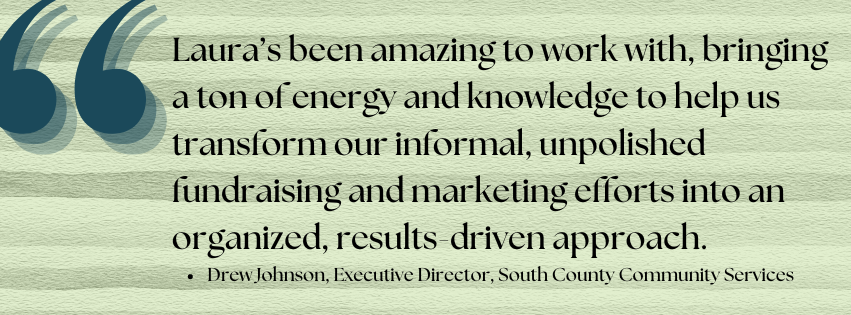
When Dreams Come True
Job Training Program Soars High Two Years After Launch
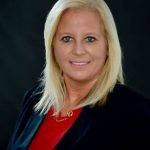
Angie Reynolds, Founder & Director of TEK Center
In a previous life, Angie Reynolds worked in human resources at a Kentucky-based construction company. Over her years there, she realized that the talent pipeline for workers was running dry. Workers were aging out, younger hires were rare, and skilled trade workers scarce.
So, Angie decided to do something about it.
In 2022, an idea formed in her head: to uplift Eastern Kentucky communities through sustainable career paths. She envisioned a technical training center that offered specialized skilled trades training tailored to meet the pressing demands of local employers. New job training and certifications would provide new opportunities to younger talent and those wanting or needing to change careers.
She committed to her dream, left her paid HR post, and through a program sponsored by the Mountain Association, brought me in to conduct an organizational assessment to turn her vision into reality.
The assessment analyzed 12 core areas of operational need and development and helped Angie prioritize her organizational start-up needs, her limited start-up resources, and her time.
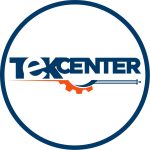 Today – just two years later – Angie’s dream, TEK Center, is a thriving accomplishment. Located in the heart of Eastern Kentucky, a buzzing 15,000 square foot facility houses six staff members who provide industry-developed training in skilled trades designed to address the growing workforce needs across the region.
Today – just two years later – Angie’s dream, TEK Center, is a thriving accomplishment. Located in the heart of Eastern Kentucky, a buzzing 15,000 square foot facility houses six staff members who provide industry-developed training in skilled trades designed to address the growing workforce needs across the region.
They teach four certification pathways – electrical, heavy equipment operation, industrial mechanic, and plumbing. For their first enrollment year in 2023, TEK Center had 103 applicants with 40 accepted for participation.
“We’ve had great success so far,” Angie tells me with a classic Kentucky twang. “Our attrition rate is very low, especially compared to community colleges. And our graduation rate is much higher than theirs as well – 67% compared to 25%. In our first year of classes, 27 new trained workers will be ready to serve in higher paying and needed roles across Kentucky.”
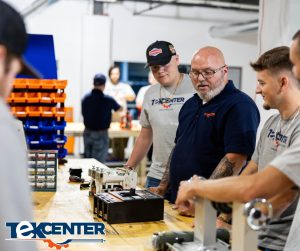
TEK Center students and instructors working and learning
Angie worked with her staff to structure classes to meet the needs of TEK Center students, allowing them to remain or be employed while they went through their schooling for certification. They created fast-tracked, skill-focused courses that lead to nationally accredited, industry-recognized certifications in less than a year. Through strategic networking and grantwriting, she acquired valuable start-up funds to propel her dream into a booming bricks and mortar space that is changing lives – and the local economy – for the long haul.
“College is not for everyone and I am very thankful that TEK Center is providing a way for young adults like myself interested in trade jobs here is Eastern Kentucky,” says TEK student Cameron Kilgore.
Angie’s work hasn’t gone unnoticed: TEK Center has earned two awards in just two years. Floyd County Kentucky recognized the Center as a Partner in Education. And the Best of the Mountains conferred them with the Silver Award in 2023 from a field of over 10,000 nominations.
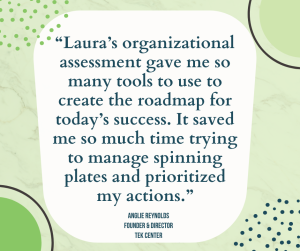 Today TEK Center stands as a beacon of opportunity. But Angie’s not done yet: in the coming years, she plans for TEK to continue to grow. She has her sights set on a new building at least twice the size to accommodate explosive growth as well as participation in FAFSA to allow students to access federal financial aid. She has more certification pathways planned in masonry and carpentry. And in just the next two years, she projects that TEK Center will employ as many as 20 instructors and staff to teach 400 students per year.
Today TEK Center stands as a beacon of opportunity. But Angie’s not done yet: in the coming years, she plans for TEK to continue to grow. She has her sights set on a new building at least twice the size to accommodate explosive growth as well as participation in FAFSA to allow students to access federal financial aid. She has more certification pathways planned in masonry and carpentry. And in just the next two years, she projects that TEK Center will employ as many as 20 instructors and staff to teach 400 students per year.
“Coming from the private sector, I knew that starting a nonprofit would be a challenge,” says Angie. “Laura’s organizational assessment gave me so many tools to use to create the roadmap for today’s success. It saved me so much time trying to manage spinning plates and prioritized my actions.”
Are you a dreamer with a vision for a nonprofit? Does your nonprofit need an organizational assessment to help you juggle your plates? Need a roadmap from a pro on what steps you can and should take to leverage the results and impacts you want to see? Want to become an award-winning beacon of opportunity like TEK Center? I can help! Let’s talk about your organizational development and assessment needs!
Learn more about the fundraising work I do for nonprofits here.
Spinning Gold from Straw
Fundraising campaign raises 750% of goal
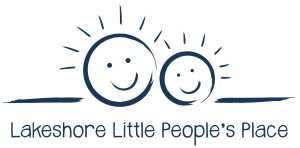 Coming out of COVID in fall of 2023, Colleen Walters, the Executive Director of Lakeshore Little People’s Place knew some things needed to change.
Coming out of COVID in fall of 2023, Colleen Walters, the Executive Director of Lakeshore Little People’s Place knew some things needed to change.
“We were able to make it through COVID with some financial boosts and the grace of God,” said the director of the Christian nonprofit childcare center based in Holland, Michigan. “But I knew we needed a more sustainable approach to building revenues to last into the future.”
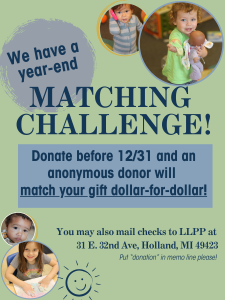 Partnering with me, Colleen and I worked together to build a plan for a first-ever holiday appeal to Lakeshore Little People’s Place supporters and contacts.
Partnering with me, Colleen and I worked together to build a plan for a first-ever holiday appeal to Lakeshore Little People’s Place supporters and contacts.
With a relatively small database and contacts spread hither and dither, I guided Colleen through a carefully crafted step-by-step process to meet their short-term fundraising needs while also structuring the nonprofit for long-term success – an eventual database and ongoing supporter asks and involvement. A thoughtful donor appreciation and engagement strategy was also developed.
The year-end fundraising goal got a boost after I coached Colleen in cultivating a matching donor to amplify donor response to the mailing. The donor agreed to a generous match and work began.
Guiding Colleen through the steps to build a contact spreadsheet for use in the short-term while also being constructed for an eventual import into a formal database or CRM program, over 200 contacts were developed. I collaborated with Colleen to craft a rich story-driven letter as well as an engaging insert to highlight the matching challenge, plus a reply piece to include in the mailing. Driving all this work was a helpful online task list I developed to guide who needed to do what and when so that all pieces fell into place at the right time.
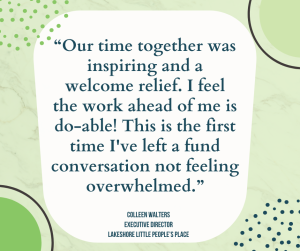 “This task list was invaluable,” says Colleen. “I could easily see exactly what needed to happen and when, which helped me to prioritize tasks, visualize a clear timeline, and prepare for all the steps along the way.”
“This task list was invaluable,” says Colleen. “I could easily see exactly what needed to happen and when, which helped me to prioritize tasks, visualize a clear timeline, and prepare for all the steps along the way.”
The campaign was a massive success, exceeding fundraising goals by a massive 750% and providing LLPP with a stunning return on investment of over 1,800%.
In hiring me to guide her in this campaign, Lakeshore Little People’s Place rejuvenated the support of donors who had given in the past, reached and connected with brand new donors, and was able to generate an extraordinary return on investment that exceeded initial goals.
Does your nonprofit want to see fundraising results like this? I can help! Let’s talk about your fundraising or organizational development needs!
Learn more about the fundraising work I do for nonprofits here.
YMCA Learns Donor Retention Lessons Big Time
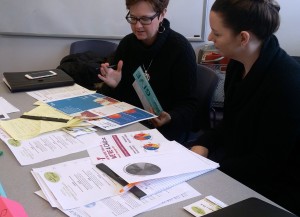
Decatur Family YMCA Financial Development Director, Natalie Beck, works with colleague, Sara Hoban, the Y’s Director of Membership & Marketing, on fundraising strategies.
People who have already given to your nonprofit organization at least once are your very best prospects for continued donor engagement, for it costs far less to keep a donor than it does to secure new ones.
Makes sense, right?
Still, the average nonprofit in the U.S. loses an astonishing 70% of donors after the first gift.
It wasn’t until Natalie Beck heard that sobering statistic in one of do good’s fundraising classes that a light suddenly shone on her very next task back at the Decatur Family YMCA.
“It was a combination of hearing the lessons of ‘pro-active’ and ‘ask’,” the organization’s Financial Development Director said. “I suddenly realized how much money we were about to leave on the table if we didn’t act.”
Y donors from the prior year had been contacted and communicated with by staff throughout the current year, but no formal or proactive ask for donations had occurred. These donors had represented nearly $35,000 in giving in the year before but nothing close to this had come in from them in during the current year. As it inched toward year-end, Natalie now knew that had to change, and fast.
A story-driven and mail-merged letter was created based on tactics also learned in a do good Storytelling class and sent to 94 almost-lapsed donors in late November.
She was hoping for $5,000 given the time that had passed. These would be important funds for the organization’s SPLASH program for low-income children.
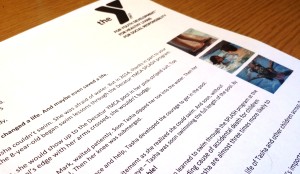
This proactively-sent, ask-focused letter sent to former Y donors was projected to raise $5,000. Instead it raised $25,000.
By mid-January though, donations had flown in, surpassing $25,000 – five times what Natalie had hoped for, and an incredible boost to the important swim programs for the community’s children in need. She also turned the expected donor 70% loss into only a remarkable low 30% one.
“This letter would not have been developed had I not participated in do good’s classes. In fact, the letter began as part of the hands-on exercise in class,” says Natalie.
As a result, Natalie and her colleagues are now better focused on their donors and are developing a formal plan to keep them aware of how donations are used and planning events that highlight programs and the impact of donors. They are also including a donor focus in their quarterly newsletter to share why donors support the YMCA and how giving enriches their own lives.
“We learned some important lessons from do good: to focus on maintaining our current donors and build better relationships with them. We know now to be more in touch, to be proactive, and to ask. ”
“We now have a solid plan in place for next year and years to come for donor retention. We are in a very good place.”
Does your nonprofit want to see fundraising results like this? I can help! Let’s talk about your fundraising or organizational development needs!
Learn more about the fundraising work I do for nonprofits here.
Nonprofit Excellence helps nonprofit rise above Illinois’ budget situation
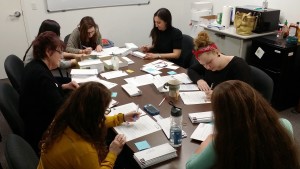
RACES board and staff members hand-signed all 700 fundraising letters sent out in February. The first four days of responses netted almost $15,000.
Mary Evans took the helm of her new job as Executive Director for Rape Advocacy, Counseling & Education Services, or RACES, about the same time that Illinois’ 2015-2016 budget should have gone into effect.
She never thought that 10 months later, she’d be at the helm of an organization still due $194,000 from the state with no payments – or budget agreement – in sight.
In her first week on the job though, Mary made an important investment that is paying big dividends now, and one that is helping the small nonprofit weather the financial storm: she signed up for do good’s Nonprofit Excellence Series.
“do good‘s trainings are seriously high-impact game-changers. Our doors would not still be open if I had not signed up when I did. They’ve literally transformed our organization and saved us from closing in the face of the state budget impasse.”
Mary knew RACES’ budget was too dependent on state funding and that she needed to learn how to change that. She never dreamed the need would be as urgent as it was as month after month went by without contractually-due funds coming from the state.
“do good’s classes taught us immediate ways to change operations and raise more money: incremental things that packed a huge punch. We felt the positive impacts instantly and it helped to buffer the storm we found ourselves in. And it gave us optimism during dark times.”
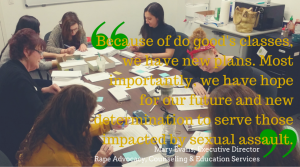 Things began to markedly change when Mary and her team used advice from the Creating Special Events class to turn a lagging $900 annual event into a $7,000 one with just three weeks to plan. The Fundraising Letters class helped bring in $15,000 in under a week.
Things began to markedly change when Mary and her team used advice from the Creating Special Events class to turn a lagging $900 annual event into a $7,000 one with just three weeks to plan. The Fundraising Letters class helped bring in $15,000 in under a week.
RACES has invested those new funds to continue building their future.
Because of the classes, RACES raised close to $50,000 in just a few months.
“We have new plans laid, a thriving mailing list, an e-newsletter, and a revitalized staff and board. Most importantly, we have hope for our future and new determination to serve those impacted by sexual assault.”
In 2016, do good is offering 58 classes in 4 Illinois cities though the Nonprofit Excellence Series. We have 21 total topics this year, including 8 new classes. Each session is 2 hours and only $30. Transform your organization, too, by signing up for one class or the entire series today!
“It’s transforming our work. It’s transforming lives.”
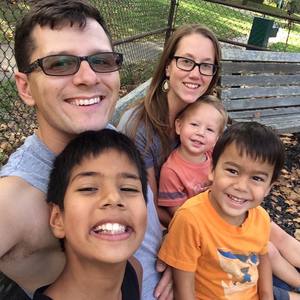
Chance and Ginger Newingham and their three boys. All are dedicated to changing lives of families and youth in Sierra Leone, Africa.
Every morning, Chance Newingham wakes up in the small, rural Illinois town of Athens, about 30 minutes north of Springfield.
After tending to family matters, including working with his wife, Ginger, to get their three boys prepared for the day, Chance turns his attention halfway across the globe.
Chance and Ginger serve as ambassadors and missionaries for Lifegate in Africa, a U.S.-based nonprofit serving children and families in poor, rural areas of Sierra Leone, Africa with housing, medical, educational, and religious services.
Called to serve by his passion for Christ, Chance pours his heart into his work.
“While fulfilling, it’s never been easy,” Chance says of his role as Director of Partnerships with Lifegate. “Trying to invest people in the U.S. in work being done so far from them and with cultures so unfamiliar, well, that’s an uphill battle every day.”
His faith propels him on and in 2015, he signed up for do good‘s Nonprofit Excellence Training Series.
“Things really came into focus,” he says of the classes. “I realized that the key to growth was infusing stories and photos into everything we do and that in all that we do, we need to focus on relationship-building. I became more strategic with my efforts, and things have really started to get fired up.”
Chance really wants to see Lifegate grow because he personally knows the lives that depend on their work at the preschool, orphanage, and churches Lifegate supports and runs. He’s been to Africa to help with the programs on-the-ground five times.
“Our organization is new, still a start-up really. do good’s classes have really helped me understand the path we need to be on – the right steps to take to ensure we grow and are successful into the future.”
Just this summer and fall alone, Chance used lessons learned in class to increase Lifegate’s revenues from special events and fundraising appeals 50% over projections. A part of the new funds raised will help Chance return once again to Africa in Spring 2016 to work on a program level for two weeks.
“I know my journey back this time will be different,” he says. “I have a new awareness of how I need to spend my time in the field to bring stories, photos, and real change back to build support in the U.S. It’s transforming our work. It’s transforming lives.”
do good’s advice has been so valuable to Chance that he keeps us as a lifeline when he needs a hand. “A phone call here, an email there, and an occasional meeting – all of my time with Laura at do good has more than paid for itself. Totally worth it.”
“It’s not just the money. It’s the strategy, the planning, the storytelling that I learned that will propel Lifegate into the future, that will help us bring our life-changing work to more people in Sierra Leone.” – Chance Newingham, Director of Partnerships, Lifegate in Africa
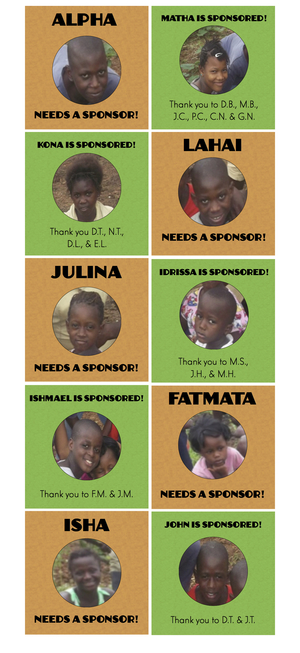
Lifegate in Africa’s Sponsor-An-Orphan program.
Tangible take-aways pave a new future
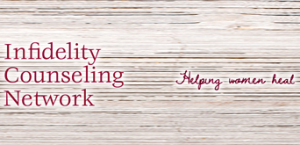 Infidelity is one of the most life-altering events a person can experience, shattering trust and eroding confidence. It’s also a really tough issue to talk about – and to raise funds for.
Infidelity is one of the most life-altering events a person can experience, shattering trust and eroding confidence. It’s also a really tough issue to talk about – and to raise funds for.
But the leadership at the Infidelity Counseling Network was determined to build a strong fundraising program as they saw the need for the services they offer quickly rising with each passing year. With all their programs offered free to the women going through the trauma of infidelity, their small staff and board realized that external funds would need to grow.
And that meant their network and their skills needed to as well.
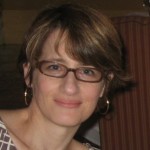 In late 2015, the group’s Executive Director, Laura Steuer, and Board President, Ebony Utley, Ph.D, contacted do good to begin the process of strengthening their fundraising efforts.
In late 2015, the group’s Executive Director, Laura Steuer, and Board President, Ebony Utley, Ph.D, contacted do good to begin the process of strengthening their fundraising efforts.
The California-based nonprofit received consulting sessions with do good’s Laura Huth via phone conference call and email feedback and check-ins.
“We got specific and very customized action items that were backed up by theory and research-based concepts,” said Steuer.
In addition to helping the Infidelity Counseling Network organize the steps they needed to take and in what order to implement a holiday fundraising appeal, do good guided the organization in ramping up their storytelling efforts to make the lives they touch more real.
“Our services are all confidential, so we were having a problem figuring out how to talk about what we do,” said Steuer. “But Laura showed us that we can indeed tell very rich and compelling stories of lives changed without ever jeopardizing our client’s confidentiality. This is really going to change things for us.”

Using anonymized stories of those the Infidelity Counseling Network has helped boosted their ability to connect with donors.
The Infidelity Counseling Network surpassed their holiday appeal goal by 25% using a combination of a printed appeal combined with online communications on social media, their e-newsletter, and their website. “Our investment in do good was worth every penny,” Steuer says. “Next year we are already planning to over double our goal from this year!”
In the process, the Network’s leadership learned some new things they’ll need to work in into 2016 and beyond. They realized in their holiday appeal that they did not gain many new donors, and so for 2016 they aim to widen their donor pool. One concrete step will be including a new concept for all new board members who join their team: an expectation of all board members to give of their time, talent (skills), treasure (money), and ties (networks).
“do good gave us amazingly tangible take-aways – the most useful type of fundraising advice a small nonprofit like ours can get to propel us where we want and need to be.”
– Laura Steuer, Executive Director, Infidelity Counseling Network
2 Hours, 20 Bucks & New Hope for the Future
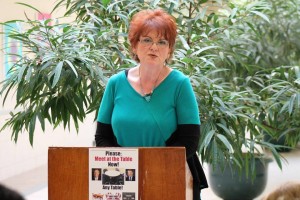
Mary Evans, Executive Director, Rape Advocacy, Counseling & Education Services
One of the first things that Mary Evans, the new Executive Director of Rape Advocacy, Counseling & Education Services in Urbana, Illinois, did when she was hired was sign up for do good’s Nonprofit Excellence Training Series. Little did she know what a valuable investment this would be.
“In the special events class alone I had about six ‘a-ha’ moments,” she reports. “It was like a light would go off, then another, and another.”
She inherited a poorly-performing special event when she was hired. “In years past, it raised about $900 – every dollar helps, but is it even worth the effort?” she sighs. “I was frustrated with the time being spent to raise so little – until I went to do good’s class.”
Mary left energized, and her Personal Action Plan – a custom tool do good uses in every training we offer – overflowing with ideas. She learned several tips from do good to refocus the event as a friend-raising opportunity and ideas to infuse better fundraising options into the evening.
“I went back to RACES and immediately began working with my staff to infuse more attendee data collection options, increase our storytelling, and to better brand materials with photos and quotes.”
In the end, the Boo Bash, which was expected to raise another $900 actually raised $6,957 – nearly 700% more than planned. “If I had more than a handful of weeks to reformulate things based on what I learned in class, I know that would have been even more,” Mary reports. “And it definitely will be for future events!”
The event also sparked the creation of RACES new mailing list with the addition of nearly 100 new names of supporters. “For years, we never cultivated names or addresses for a database,” says Mary. “But that all changed because of do good‘s class. Now we are on our way.”
“That one class cost me about $20, but helped us raise over $6,000 in unexpected funds for our mission,” says Mary. “But what’s most exciting for me is that what I learned in do good’s Nonprofit Excellence training will pay off for RACES as we plan for the future. Best $20 I ever spent!” she laughs. (The actual return on Mary’s investment is 34,800%.)
“The tips and tricks we learned were so simple to implement”, Mary reports. “So logical and straightforward, and they’ll work for us for years to come.”
The impressed board of directors opted to invest the unplanned funds into continuing to build RACES’ future: they invested the first 20% of their profits in a newly-created reserve fund, their first. With the rest, they are purchasing a formal CMS (database) system to manage contacts properly and have also committed to a formal strategic planning session in early 2016.
“This tiny but significant event turnaround has shown the board that so much more is possible for RACES. They have new energy to see how we can grow into the future. It’s an exciting time at RACES!” – Mary Evans, Executive Director, Rape Advocacy, Counseling & Education Services
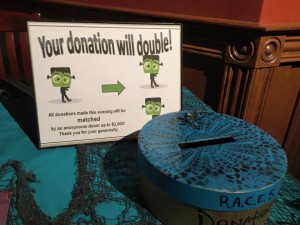
Securing a matching donor was one strategy RACES employed to boost donations at the Boo Bash.

RACES 2015 Boo Bash was expected to raise $900. With do good‘s help, they actually raised $6,957 – 700% more than planned.
A 61,000% Return-On-Investment
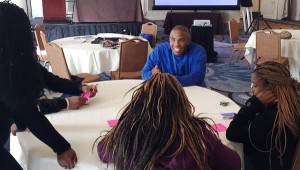 Shandra Summerville is passionate about children’s mental health. So when she was asked to coordinate the large national conference for the organization she’s a board member for, she was thrilled but also knew she had her work cut out for her.
Shandra Summerville is passionate about children’s mental health. So when she was asked to coordinate the large national conference for the organization she’s a board member for, she was thrilled but also knew she had her work cut out for her.
Despite a major organizational restructuring underway, Shandra knew she wanted to take things to the next level with the event to raise awareness and more funds to support the Federation’s important work.
Shandra’s first move was to sign up for a do good Nonprofit Excellence Training on Special Events at Parkland Business Training in Champaign, Illinois. The two-hour session, she said, “gave her concrete ideas for action”, but also highlighted the need for a “deeper dive into a couple areas” to be sure she was on the right path for her event planning journey.
And so Shandra shelled out $85 for a one-hour do good consultation. In the end, that $85 turned into a whopping $52,000 return to the Federation.
In their work session, do good‘s Laura Huth reviewed the event goals with Shandra, which were to move event sponsorships from $5,000 to $20,000 and to increase exhibitors (at $350 per table) from 5 to 15.
Shandra listened intently as Laura reviewed materials and made suggestions for narrowing focus and honing communications to compelling essentials. In the end, a previously nine-page document shrunk to a more digestible three. While still containing the most valuable and needed information, the sponsor packet “became more approachable, compelling, and readable” Shandra says. “What Laura taught me that was key was to look at this communication tool from the reader’s point of view. What do they want and need to know?”
In the end, the reformatted packet didn’t help the Federation raise $20,000. It actually helped them raise $50,000 in sponsorships – a 10-fold increase from the prior year.
The reformulated communications also helped the Federation soar past their exhibitor goal of 15 to 25 – 66% more than projected and raising and additional $3,500 more than planned.
“I spent $85 and do good helped us turn that into $52,000 of unexpected income,” Shandra reports of her unbelievable 61,000% return on investment. “To say they met expectations would be a gross understatement. This was perhaps the most valuable hour I’ve ever spent for my organization!”
“I highly recommend do good, I love their trainings, and their consultants are caring, knowledgeable folks. The Federation 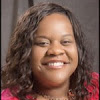 is richer for our relationship with do good – literally and figuratively.”
is richer for our relationship with do good – literally and figuratively.”
– Shandra Summerville, National Federation of Families for Children’s Mental Health
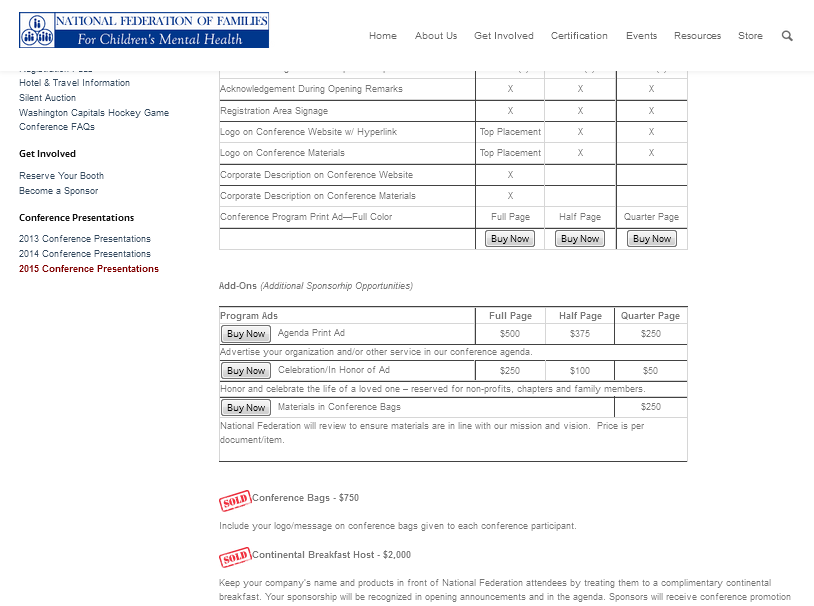
It certainly withstood the test of time, but after 10 years, our old website finally required a redesign. A decade earlier, it was constructed with a long-term vision in mind – built to grow and morph with our new company into the future. And boy did it. Most sites are outdated within three to five years, but our team rocks at long-term vision, so we got tons of mileage out of our initial site. Today though we love the fresh new look, the smooth new navigation, and the strong imagery on the new site. It’s also a lot more mobile-friendly, too. Our team did all the work ourselves: the copy, the photos, the art, the construction, and the site map and navigation.
Looking for a new mobile-friendly site with a clean look, solid navigation, and strong and compelling copy? You are definitely in the right place!

 Shandra Summerville is passionate about children’s mental health. So when she was asked to coordinate the large national conference for the organization she’s a board member for, she was thrilled but also knew she had her work cut out for her.
Shandra Summerville is passionate about children’s mental health. So when she was asked to coordinate the large national conference for the organization she’s a board member for, she was thrilled but also knew she had her work cut out for her.is richer for our relationship with do good – literally and figuratively.”
